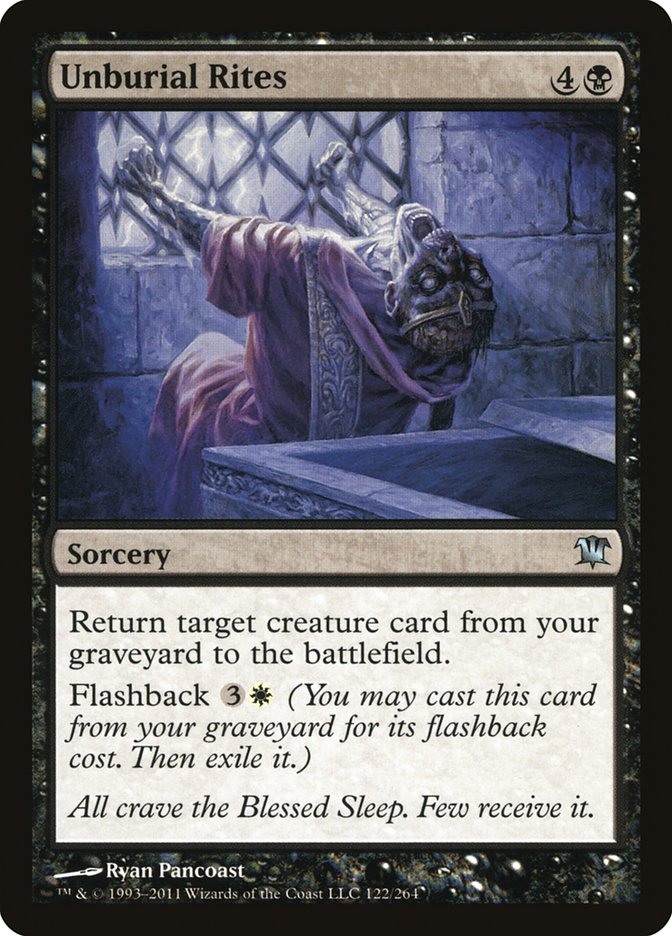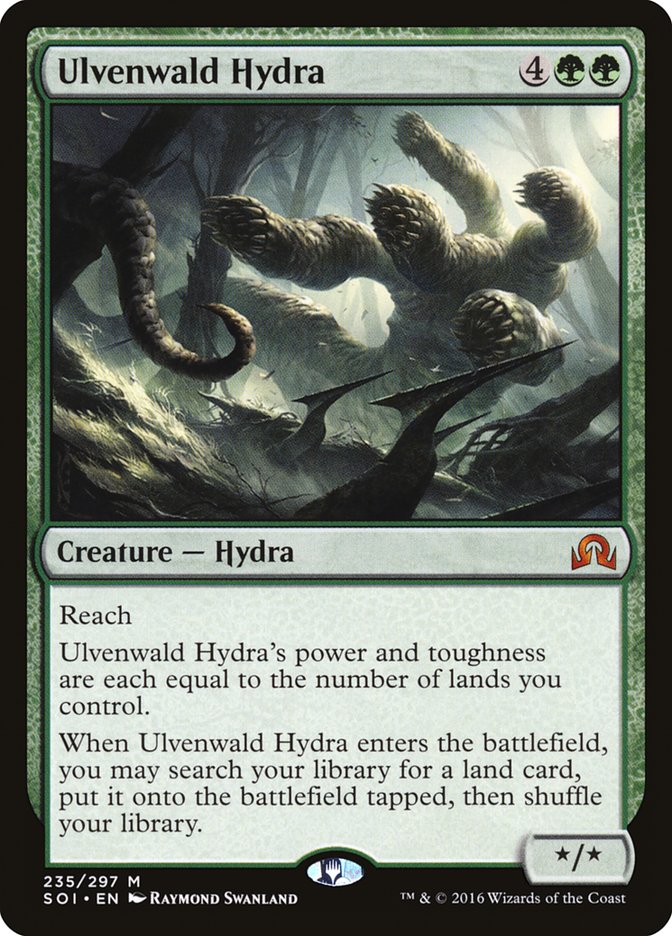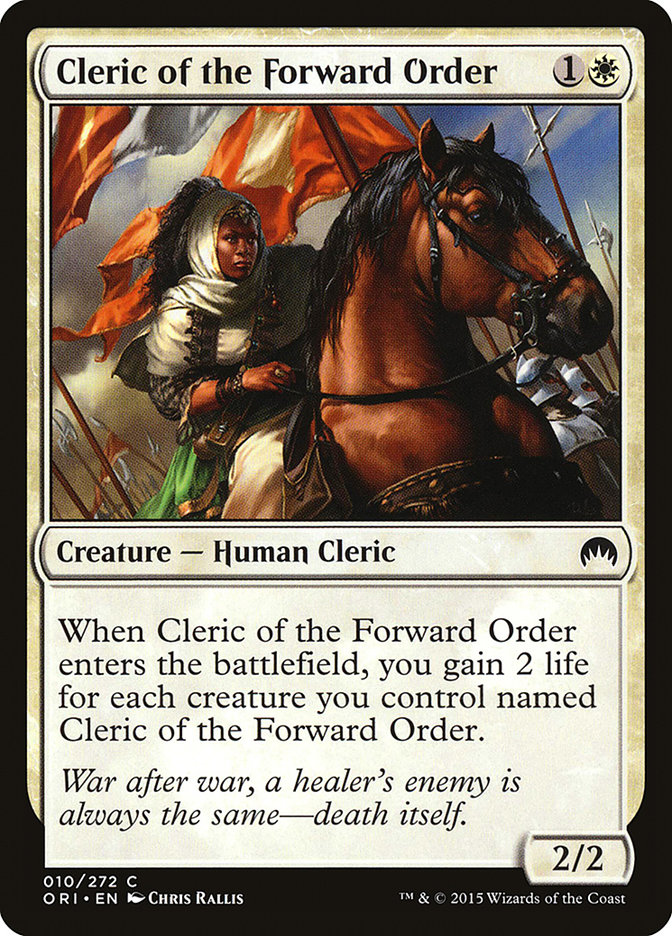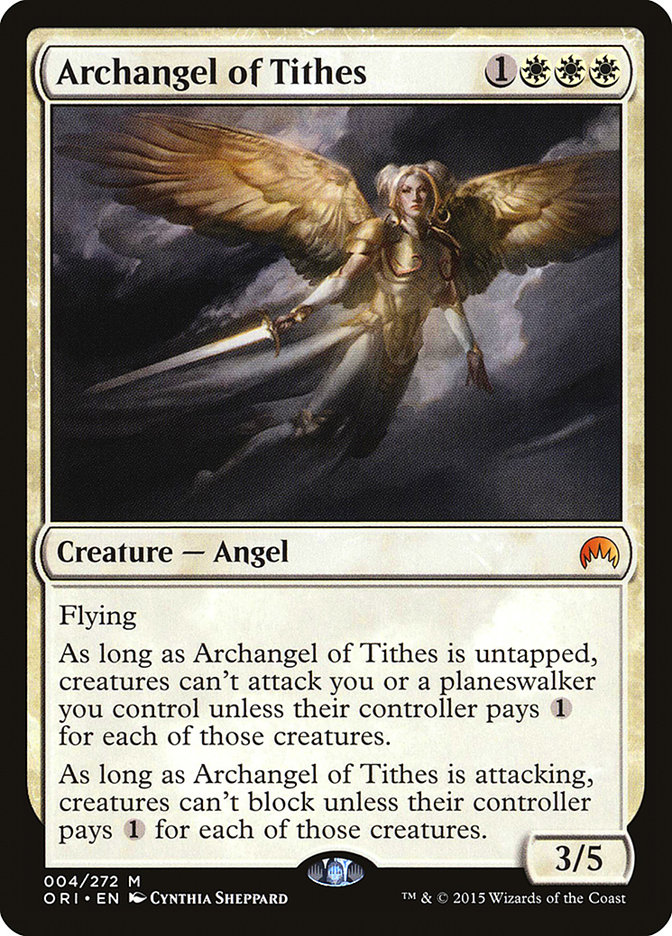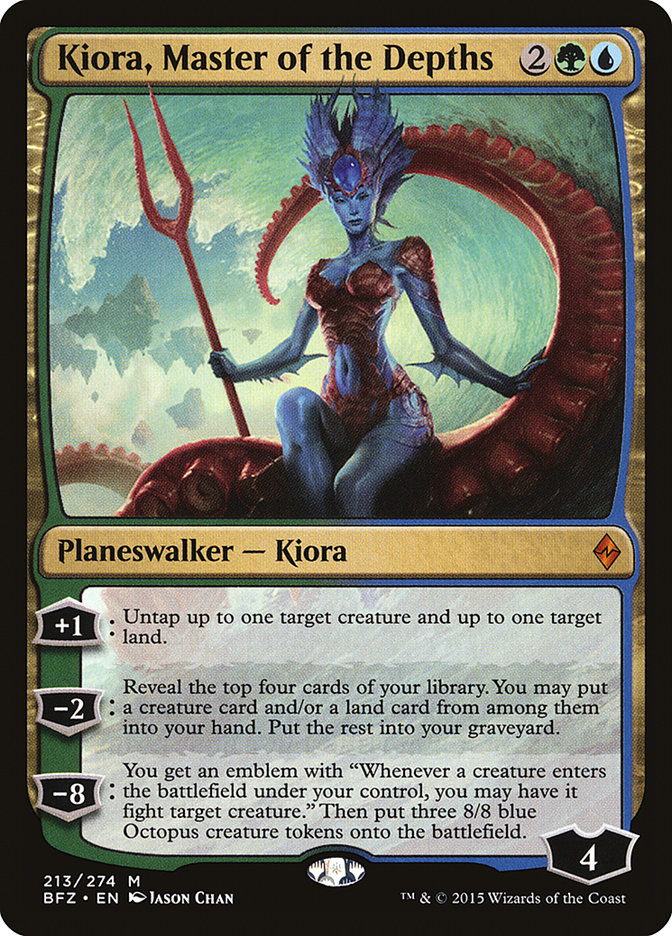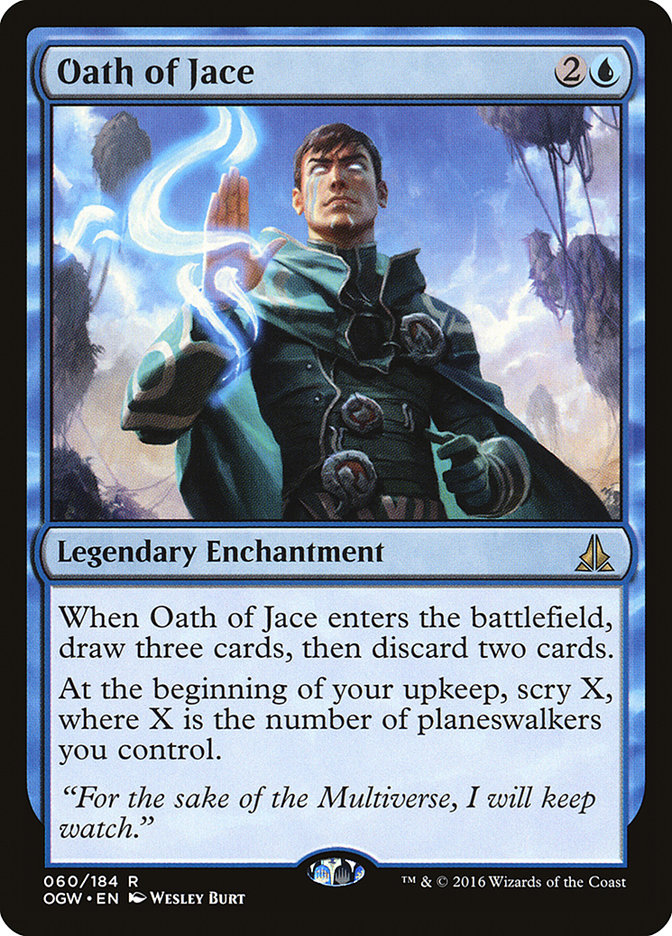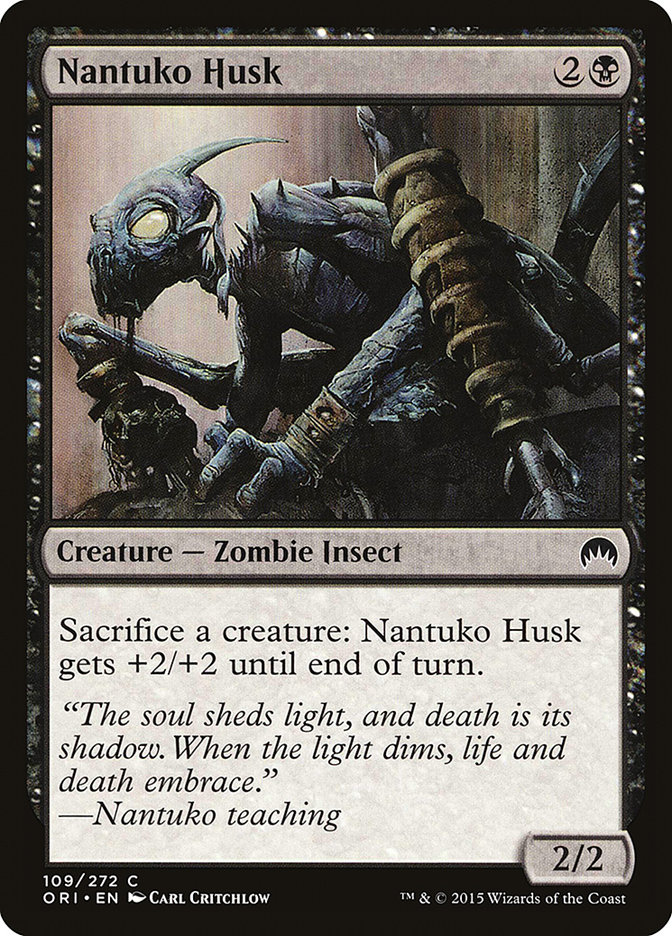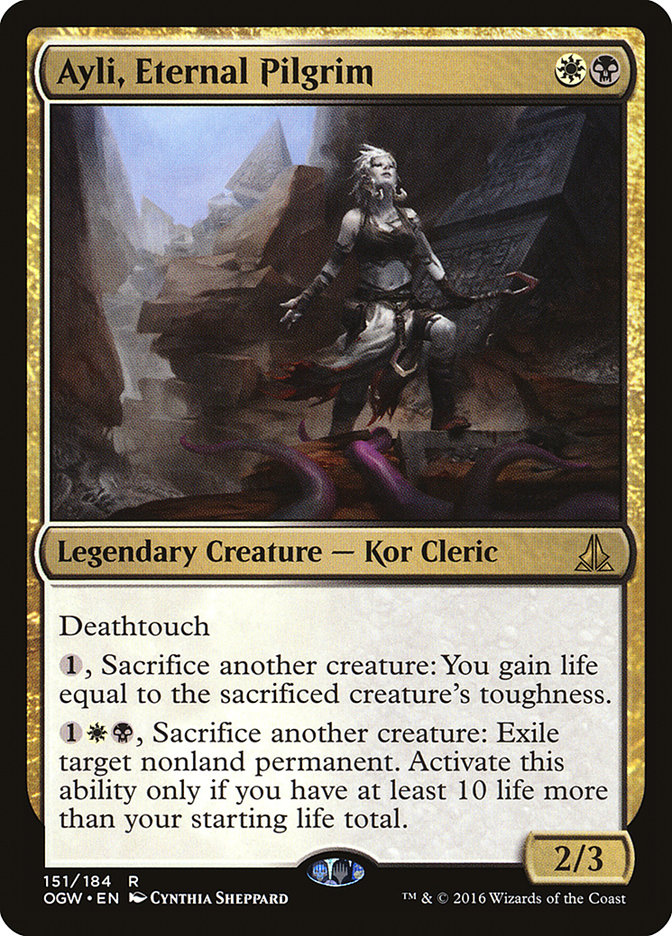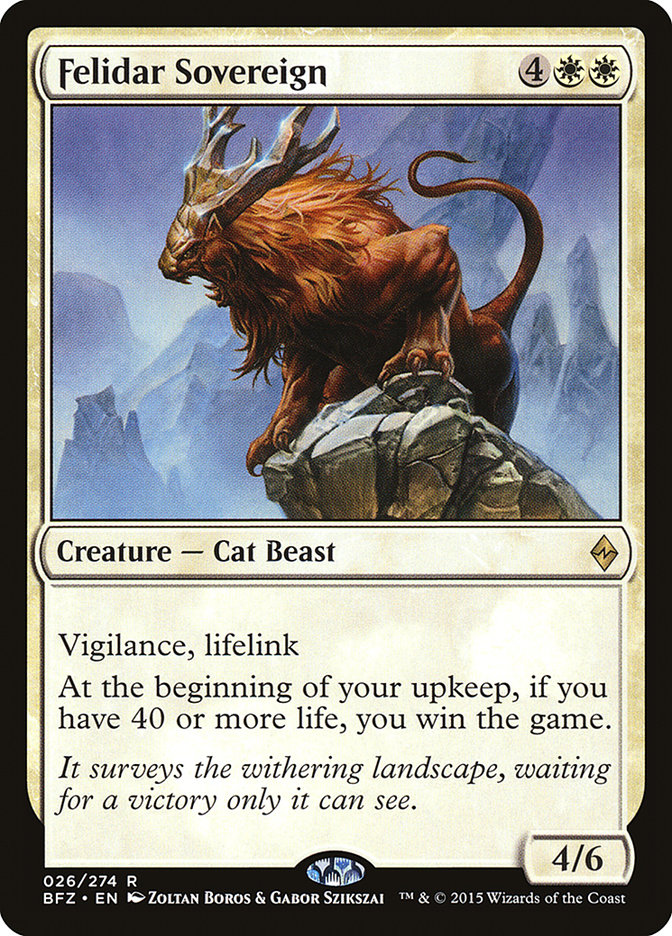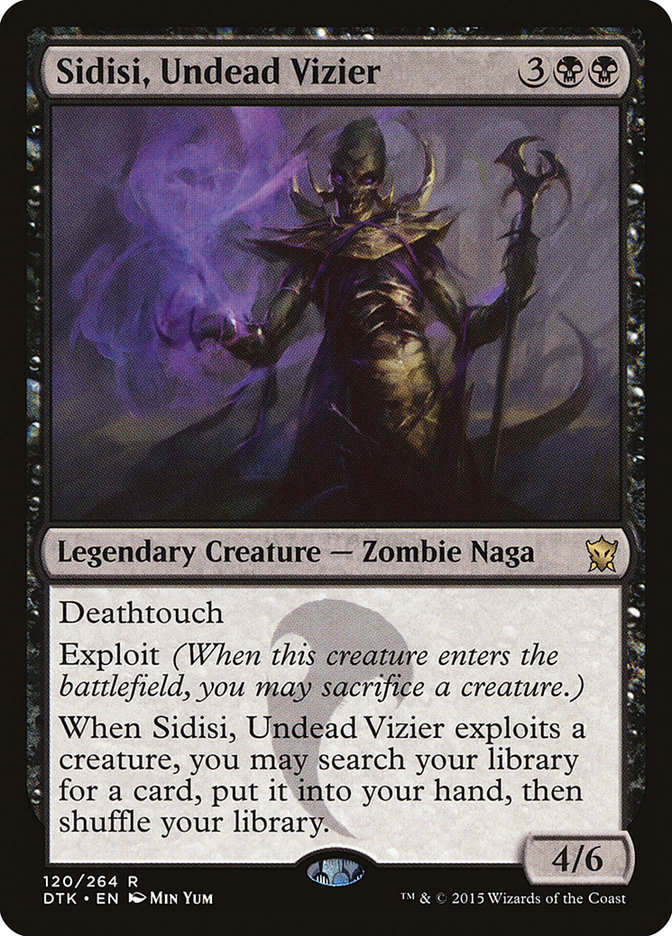For taking place on Innistrad, a plan about the afterlife and things that return from it, Shadows over Innistrad has been surprisingly not about reanimation. You probably already heard me complain about this before. I mean, Unburial RItes was a high-quality reanimation spell. For the most part, with the exception of flavorful additions like Ever After, Shadows over Innistrad has had only a few token ways to bring back creatures.
I feel a little shorted, a little cheated by a block that I loved so much. Things are a little different now; enters-the-battlefield effects are a little less powerful and a bit less common in general, so reanimation isn’t as game-changing. It’s just something else you could do.
But what if I told you that the best reanimation card in Standard wasn’t printed in Shadows over Innistrad? It was printed six months earlier as part of a cycle, one of which I had the pleasure of spoiling before it came out. That’s right; I’m talking about Emeria Shepherd.
Emeria Shepherd has been on my watch list for months, but, well, the format wasn’t ready for a seven-drop Air Elemental that still needed you to drop a Plains to do anything more than die to a Grasp of Darkness or Ultimate Price. Would have broken it wide open.
Emeria Shepherd does more than reanimate your favorite creature; it can reanimate any artifact, enchantment, and planeswalker you’d like. The deck has to be built around this Angel; you can’t just toss it into any deck. To plan a deck for it, you need to, first off, have a lot of Plains, and you’ll also need a good way to get Plains into your hand and subsequently onto the battlefield. At first glance, heading that direction leads us to a lot of basic lands for a straightforward, albeit a bit dull plan.
This was my first crack at a mono-white version, built while Khans of Tarkir and Fate Reforged were still legal. Intriguingly, it’s still legal now.
Creatures (20)
- 4 Knight of the White Orchid
- 4 Hangarback Walker
- 4 Kozilek's Channeler
- 4 Emeria Shepherd
- 4 Hedron Crawler
Planeswalkers (4)
Lands (24)
Spells (12)

While rudimentary, this deck acknowledges some of Emeria Shepherd’s strengths and weaknesses. As is always a concern for expensive landfall trigger sources, the more expensive the source of the trigger is, the less land you’ll likely have in your hand to actually trigger it. The deck is filled with nonland mana sources to keep those Plains in your hand for when you’re ready to reanimate the most attractive target: Gideon, Ally of Zendikar. By stacking Emblems, the deck’s more lackluster creatures would become terrifying. It pretty much had just one gameplan.
Then Shadows over Innistrad came around, and the otherwise mediocre, overcosted reanimation enabler finally got a buddy. It was so hard to get ahead with Emeria Shepherd due to its prohibitive cost and otherwise underwhelming body, but this little mythic helps the Shepherd get ahead. Several heads, in fact.
Ulvenwald Hydra has mostly gone unused since its release. It’s generally considered to be a much weaker, some would argue “fixed” version of Primeval Titan, but its trigger works perfectly with any landfall effect you’d like. It can go find a Plains, whether that’s a Canopy Vista, Prairie Stream, or a basic Plains, rebuying another card of your choosing! Late in the game, playing Emeria Shepherd with a Plains has the chance to take you from no nonland permanents on the battlefield to three all at once. We’re only limited by our imagination.
Plains come in three colors in the current format, and Bant colors already give us access to good enters- the-battlefield effects; just look at decks using Collected Company!
Here’s our first crack at a real deck. The juices are flowing now!
Creatures (25)
- 4 Knight of the White Orchid
- 1 Anafenza, Kin-Tree Spirit
- 1 Surrak, the Hunt Caller
- 4 Cleric of the Forward Order
- 3 Archangel of Tithes
- 3 Emeria Shepherd
- 1 Linvala, the Preserver
- 4 Reflector Mage
- 1 Sigarda, Heron's Grace
- 3 Ulvenwald Hydra
Planeswalkers (5)
Lands (26)
Spells (4)

This card dredged up a lot of the format’s forgotten cards, including the impressive Cleric of the Forward Order.
Let’s face it, decks without two-drops don’t cut it in this format. With Mono-White Humans and its variants running amok in Standard, you have to be able to block, hopefully with some incremental value along the way. Cleric of the Forward Order fills the curve nicely, and it’s easy to slide in on most turns. Gideon, Ally of Zendikar and his Emblem make the Cleric’s stats a bit more impressive, too.
Plains-heavy decks should all consider running some copies of this card. It’s a nightmare to play against if you don’t have the removal, and it’s an evasive, three-power creature that Languish doesn’t kill. Anymore, that’s enough to get a second look. The four-slot, a commonly clogged spot on the curve of most midrange decks, is actually somewhat open here, competing only against planeswalkers.
Kiora, Master of the Depths is much more my speed than the previous version of the planeswalker. All of her abilities are relevant here. Her ability to untap lands allows you to retain your land drop until after resolving the Emeria Shepherd in your hand. It can also untap the aforementioned Archangel of Tithes, making a productive counterattack very unproductive.
Kiora’s -2 is where she really shines. The deck has 51 cards that Kiora can get with this ability, and anything you don’t grab can be fodder for Emeria Shepherd in the coming turns. In a perfect world, you’re binning Ulvenwald Hydras and picking up a nice low-cost creature like the ever-present Reflector Mage and a Plains to trigger the former two. Oath of Jace is another graveyard-fueler, and given the deck’s three individual planeswalkers, it’s possible for the scry condition to be fulfilled each turn.
I wasn’t too excited about the first deck, but I knew there had to be something to be done this time around, and I was right! I jotted this up in an afternoon and took it to my shop to test out and, surprisingly, it was really close to a decent deck, and it was really fun to play! The deck prefers to be on the draw; with nineteen lands that can provide access to white mana, you had plenty of opportunities to draw your way out of a mediocre draw and into an on-time Knight of the White Orchid.
The deck lacked removal, but it put down creatures with the regularity of Collected Company decks, so I didn’t miss it as much as I thought. You’ll just outpace the opponent, and you’ll gain enough incidental life that tokens aren’t relevant and your opponent can’t profitably attack without suffering on the crackback.
The deck really was about the Emeria Shepherd interactions, but the stuff in the middle did a great job when removal or clumsy draws stuck. I won all three test matches against Mono-Blue Prison, R/B Eldrazi, and U/R Flyers. Although my opponents’ color variety was not as great as I’d hoped, it proved that the deck could move against control, hasty colorless creatures, and evasion well, usually by putting more pressure on them than they could handle.
The ability to deploy Gideon, Ally of Zendikar three times in one turn, once by casting him, second by reanimating with my land for turn, and third with a cast Ulvenwald Hydra, made my opponent toss his hands into the air. Suddenly, my flimsy army of Reflector Mages and Clerics of the Forward Order were lethal. As stated earlier, Archangel of Tithes is exceptional, blocking all of U/R Flyers’s creatures, even Goldnight Castigator. Every card played its role; I even beat down with a pair of Lumbering Falls in one game against Mono-Blue Prison.
This deck was very satisfying in this form, but I couldn’t help thinking there was something more. Even at its best, Ulvenwald Hydra lets you keep it going once, but then it’s done. What if you could sacrifice it with the Rampant Growth trigger on the stack, resolve the land search, and then target the Ulvenwald Hydra, recovering it, searching for another Plains, and repeating the process until you were out of Plains? It may not be backbreaking, but it sure sounds like fun!
The only reliable sacrifice ability in the two colors came down to Evolutionary Leap and Bound by Moonsilver, the latter of which could only be used once. Reaper of Flight Moonsilver requires delirium, which might muddy the plan. The other outlets, even those that cost a little mana, still didn’t seem that productive, suggesting an extra color might need to be added.
Nantuko Husk came to mind first, but it still felt like an arbitrary sacrifice outlet. Why not Ayli, Eternal Pilgrim? Her sacrifice was cheap and easy to activate, and you’d be gaining more and more life every time you activate it, as the Hydra would get larger and larger the more lands you controlled. Before you know it, you could easily sacrifice a creature and exile any nonland permanent you like.
Moreover, Ayli seems exceptionally well-positioned right now; she can block any creature and trade, and some creatures die if unassisted, namely Sylvan Advocate, one of the format’s biggest and flexible threats. Let’s not forget, with all that lifegain, there might even be room for a long-lost feline, Felidar Sovereign.
Let’s get on the lifegain plan using this combo!
Creatures (25)
- 1 Nantuko Husk
- 1 Felidar Sovereign
- 2 Sidisi, Undead Vizier
- 2 Nissa, Vastwood Seer
- 2 Catacomb Sifter
- 2 Emeria Shepherd
- 4 Ayli, Eternal Pilgrim
- 2 Linvala, the Preserver
- 4 Sylvan Advocate
- 3 The Gitrog Monster
- 2 Ulvenwald Hydra
Lands (25)
Spells (10)

This list provides more outlets for hard removal with plenty of opportunities to leverage powerful spells and creatures. Going Abzan not only gives us a more potent removal package, it also gives us access to solid beaters like The Gitrog Monster, whose extra land drop can help get you to Emeria Shepherd mana. If you have to eat The Gitrog Monster with Ayli, Eternal Pilgrim, you’ll be gaining tons of life, too. Sidisi, Undead Vizier is a souped-up Ayli in combat, and if it exploits itself, you can find whatever piece of the combo you’re missing. No delirium, no messy removal, just card selection at its finest.
The first list proved how powerful Emeria Shepherd can be, but it did not reinforce the support necessary to make such a plan work. The second deck felt very powerful, and I didn’t need a perfect hand to play a good game.
The final deck, however, proved to be the most fun at all in friendly testing. This mostly-legendary list features some of the most abstractly powerful cards in Standard. While powerful individually, they were unbeatable when assembled quickly together. The removal was just right, and I could provide enough pressure to force my opponent’s hand to defend themselves.
Getting the three-part combo into play was relatively easy, and although there was no immediate payoff, my opponents scooped each time. Dromoka’s Command and Anguished Unmaking kept my opponents’ Always Watchings and Gryff’s Boons at bay in Mono-White Humans, and I even was able to outpace an opposing Abzan deck, that one focusing on planeswalkers and sweepers. Both the second and third deck kept the pressure on, but the third deck had the most angles of attack, thanks to a combination of powerful cards and exploitable recursion.
Lead this flock into battle, and you’ll be all smiles.
What card finally got the support it to make it work in your deck? If Emeria Shepherd was the card you were holding out for, what was your Ulvenwald Hydra?


